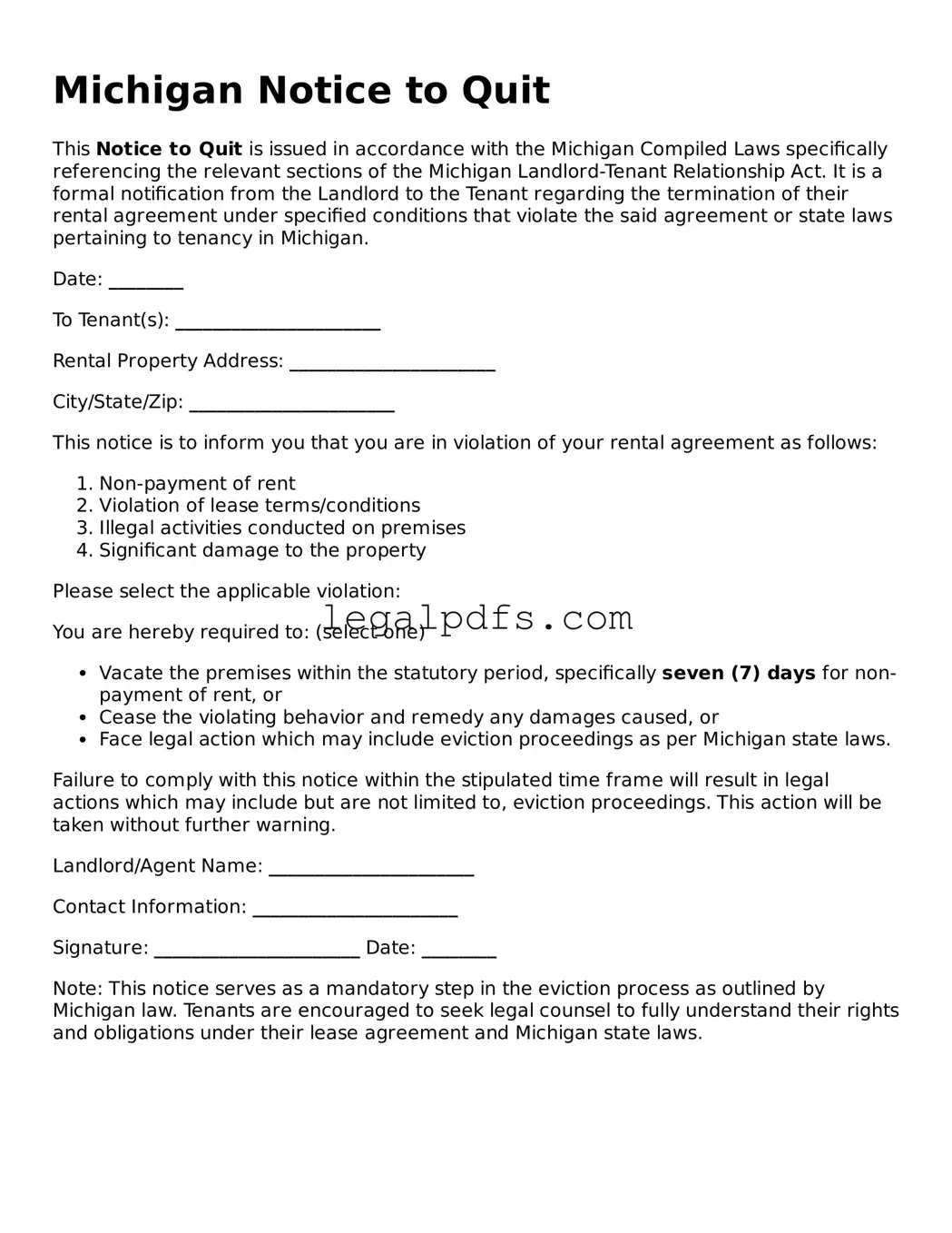What is a Michigan Notice to Quit form?
A Michigan Notice to Quit form is a document that a landlord uses to inform a tenant that they must either rectify a violation of their lease or vacate the premises by a specified date. This form is typically used for issues such as unpaid rent or other lease violations in the state of Michigan.
When should a landlord use the Michigan Notice to Quit?
A landlord should use the Michigan Notice to Quit when a tenant has violated terms of the lease agreement. Common reasons include failure to pay rent on time, causing significant damage to the property, or engaging in illegal activities. It is crucial for the landlord to serve this notice before taking further legal action to evict the tenant.
What information needs to be included in a Michigan Notice to Quit?
The notice should clearly state the reason for the eviction, such as non-payment of rent or other lease violations. It must also specify the amount of time the tenant has to resolve the issue or vacate the property. Additionally, the notice should contain the date it was served, the tenant’s rental property address, and the landlord’s signature.
How is a Michigan Notice to Quit delivered to a tenant?
This notice can be delivered personally to the tenant, left with a member of the tenant's household of suitable age, or sent via certified mail to ensure receipt. Proof of delivery is crucial, as it can be necessary if the eviction process progresses to court.
How much time must a tenant be given to vacate or rectify the situation?
The timeframe can vary depending on the violation but typically ranges from 7 to 30 days. For non-payment of rent, a 7-day notice is common, while other lease violations usually require a 30-day notice. The exact time frame should be checked according to current Michigan laws, as these can change.
What happens if a tenant fails to comply with a Michigan Notice to Quit?
If the tenant does not resolve the issue within the specified time frame or vacate the property, the landlord may begin formal eviction proceedings. This involves filing a complaint with the local district court, where the case will be heard and a judgment issued.
Can a tenant dispute a Michigan Notice to Quit?
Yes, a tenant can dispute the notice if they believe it was issued unfairly or in error. This would typically occur during the court proceedings if the landlord seeks to evict the tenant. At this stage, the tenant can present evidence to contest the eviction.
Are there any special considerations for landlords when using a Michigan Notice to Quit?
Landlords should ensure that they follow all legal requirements precisely, as failure to do so may invalidate the notice or result in delays. This includes correctly stating the reason for eviction, providing the appropriate amount of notice, and adhering to specific serving procedures.
Is it necessary to involve a lawyer when issuing a Michigan Notice to Quit?
While not strictly necessary, consulting with a lawyer can be beneficial to ensure that all legal requirements are met and to navigate any complications that may arise. This is particularly advisable in complex cases or if the tenant disputes the notice.
Where can one find a Michigan Notice to Quit form?
The form can be downloaded from legal websites, obtained from a lawyer, or sourced from local landlord associations in Michigan. It is important to use a current form that complies with the latest Michigan laws to ensure its validity.
